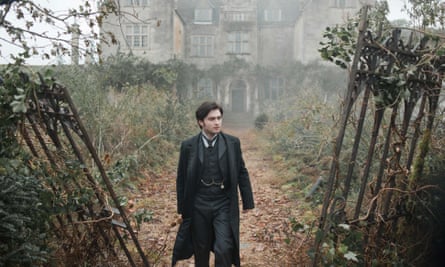Susan Hill: Why we all need a fright on a winter’s night
“D
JB Priestley was fascinated by the subject of time and the way it might shift about. He wrote plays and fiction about it, but, so far as I know, he did not write a ghost story. I wish he had. The genre has attracted some fine writers but it is often dismissed as mere “entertainment”. Literary snobs might heed the American writer Tom Wolfe. He gives another definition: “Entertainment enables people to pass the time pleasantly, and any writing should first entertain. It’s a very recent thing that there is a premium put on making writing so difficult that only a charmed aristocracy is capable of understanding it.”
Dickens’s first readers were far from being “a charmed aristocracy”, yet he, one of the greatest of novelists, delighted in the ghost story and may claim to have written the most famous one. A Christmas Carol is magnificent literature, a serious moral tale – and a first-rate entertainment. It is spooky, moving and funny by turns, and the characters have entered worlds in which they are known and understood outside the context of the book.
The existence of ghosts might yet be proven by quantum physics, but in fiction they should not be rationalised or explained away by natural causes: that shadow moving across the window as a tree shifting in the breeze; the woman who saw the ghostly child as suffering from puerperal psychosis. Ghostly children are especially troubling, of course. The boy and girl in Henry James’ The Turn of the Screw are not ghosts, they are victims – but are Quint and Miss Jessel real, or ghostly figures of the children’s imagination? Rudyard Kipling’s story “They” is both disturbing and beautiful, with its ghost-children in a garden.
Literary scholars tell us that the ghost story originated with the gothic novel in the 18th century, or with Dickens in the 19th, but we forget how relatively small our fictional culture is. In countries such as Japan and India, tales of the supernatural have ancient origins. It is a near universal form of storytelling – indeed, I often think that cavemen must have told ghost stories to explain away shadows cast by the fire inside their caves. The play of my novel The Woman in Black has had an extraordinary welcome in countries where the genre is traditional – Mexico, Japan and India – but failed in what one might describe as “rational” countries; Germany has never understood it.

It is not entirely true that a ghost story must frighten if it is to succeed. AS Byatt’s “The July Ghost” is set in a London summer garden and is almost unbearably moving, but not in the least bit scary. However, with the darkness of winter comes the longing for a ghost story – to be read when alone or perhaps aloud to a small group – and, if it is to satisfy, that ghost story must frighten delightfully. It is a basic human need. Fear of the real and dangerous plays a part in every human life and if we can ever prepare for it, and learn how to overcome it, we must do so through stories.
Horror is ever popular too, and I am often accused of writing it. Not so. A ghost story may be horrifying, but the genres are different. A ghost story must contain a ghost; a horror story need not. Gothic is different again, and it has changed slightly since its (probable) origin in the 18th century, when it contained, almost perforce, an ivy-clad castle or monastic ruins. Shirley Jackson’s The Haunting of Hill House (1959) is a wonderful and terrifying gothic/ghost story. The Turn of the Screw, perhaps the greatest ghost story ever written, is gothic – but so much more besides.
There is not much good literary criticism in the field. If you want the best background reading and careful analysis, read Night Visitors by the late Julia Briggs. (It’s out of print, which is a disgrace, and rather hard to obtain but try an inter-library loan.) Michael Cox’s introduction to The Oxford Book of Ghost Stories and his biographical study of MR James are both essential and enjoyable reading.
The ghost story has more often been short – it is hard to sustain beyond about 50,000 words without any slackening of tension – but recently, several writers have successfully written them at full length. Sarah Waters and Michelle Paver are especially good. If you prefer a short, sharp shock, then MR James is for you, as are LP Hartley, Edith Wharton, EF Benson and Elizabeth Bowen, whose The Demon Lover is one of the most chilling I know, and which improves with familiarity. E Nesbit, author of jolly good children’s books, including The Treasure Seekers, also wrote some short and deadly ghost stories.
Inevitably, in such a popular fictional form, there is an awful lot of rubbish, but the best rises to the surface, as with most things. If a story or a novel, let alone the complete works of a writer, have stood the test of time – say 100 years – and are still in print and being read, they are reliable providers of damn good narrative and ghosts that clutch at your heart.
Do I frighten myself when writing a ghost story, is another question I’m often asked. No, because I am in control. But when reading one, especially in perfect circumstances, I am often scared, even when I know the story well. I never fail to be chilled by MR James’s masterpiece, “Casting the Runes”, or to feel uneasy as I get a few pages into Edith Wharton’s “Mr Jones”. Which, of course, is precisely what I want, sitting beside the fire in a room full of odd shadows cast by the lamp, on a cold winter’s night.



No comments:
Post a Comment